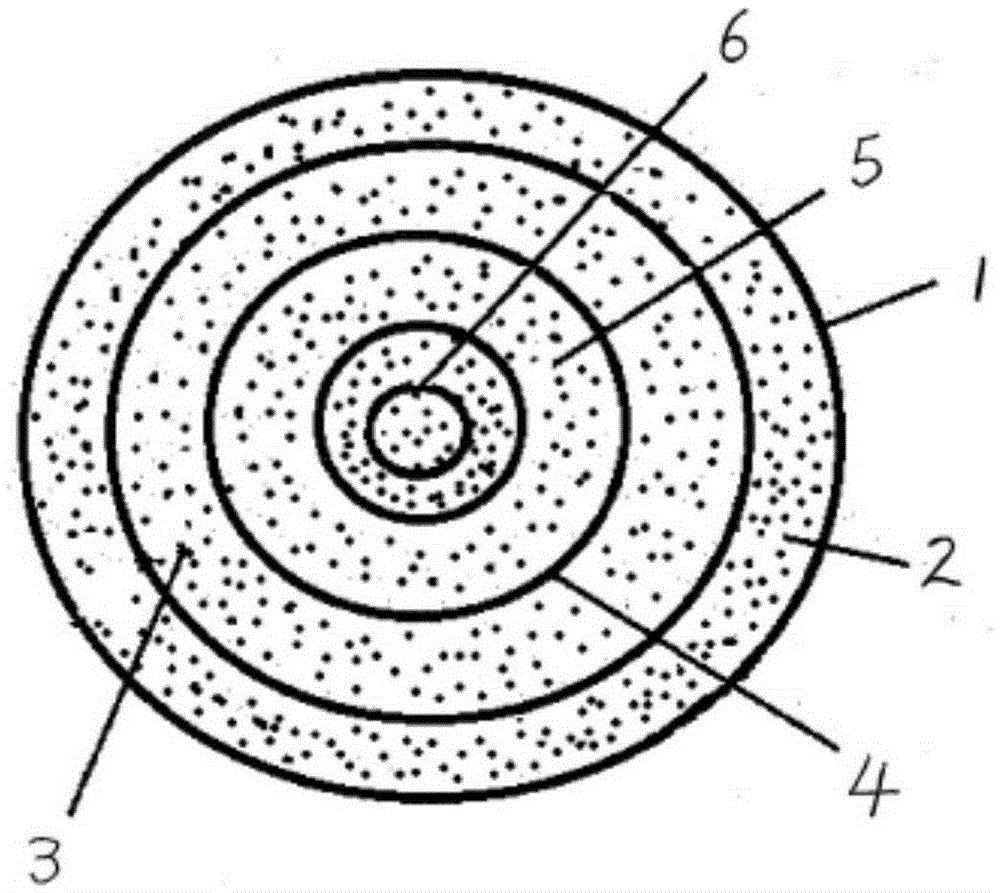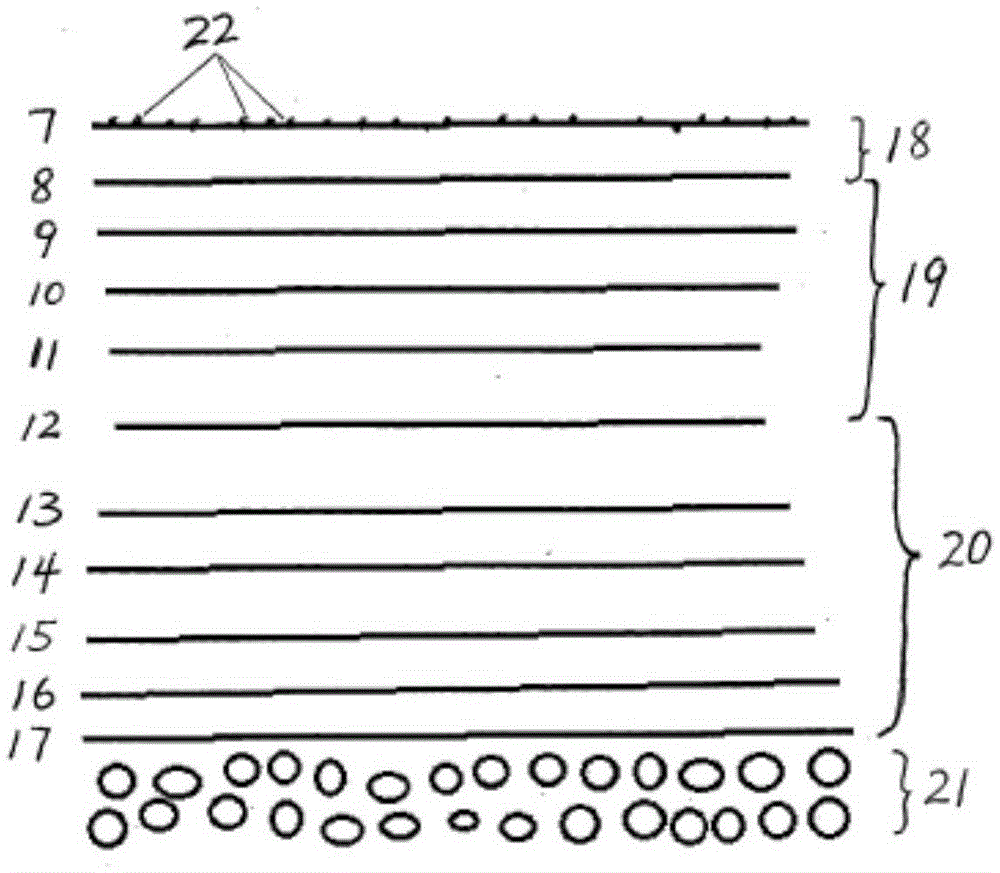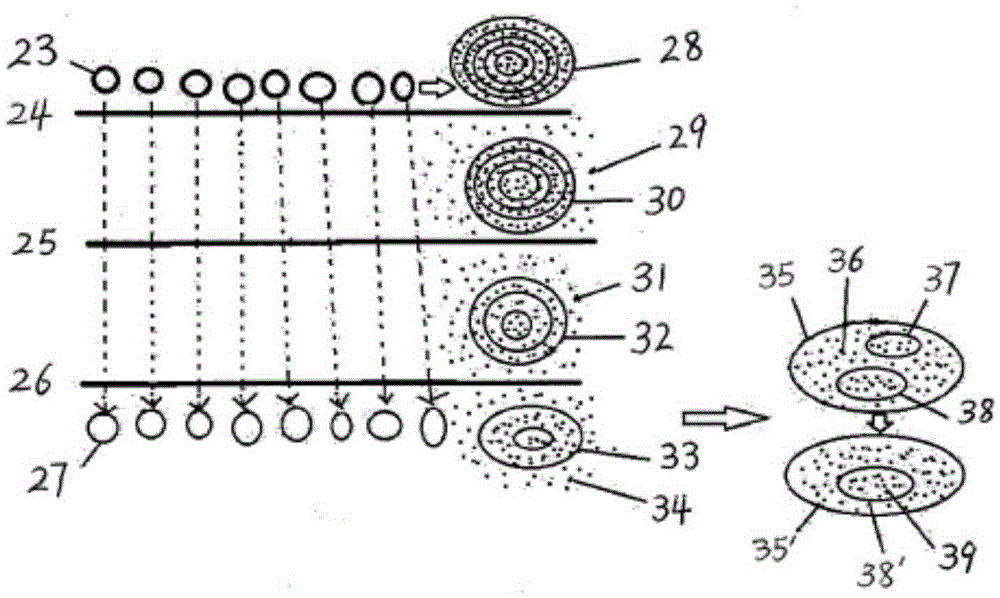Compounds encapsulated nanoparticles and nanoemulsions preparation and use thereof
A nanoparticle and nanoemulsion technology, applied in nanotechnology, nanotechnology, nanomedicine, etc., can solve problems such as tasks that are difficult for single-layer nanoparticles to fine
- Summary
- Abstract
- Description
- Claims
- Application Information
AI Technical Summary
Problems solved by technology
Method used
Image
Examples
Embodiment 1
[0018] Example 1: A Surfactant System A (Caprylic Capric Glycerides, Oil A)
[0019] Caprylic capric glyceryl (2 g) was added to polyoxyethylene castor oil (3 g) and mixed well at room temperature. An aqueous solution of the active ingredient (0.25 g) such as hyaluronic acid (0.5%) is then added and mixed well. The resulting clear solution was measured for particle size and zeta potential using a Malvern particle size analyzer. The particle size (z average) by intensity is 12.52nm, and the particle size by volume distribution is from 4.63nm to 10.40nm (Chart 1). In a separate container, this clear solution was added to 45 grams of hyaluronic acid in water (0.5%), stirred and mixed well. The resulting material was a clear to light blue solution with a particle size (z-average) of 31.91 nm by intensity and a particle size distribution by volume ranging from 16.50 nm to 37.60 nm (Chart 2). To this nanoparticle solution was added a cream containing emulsifier PemulenTR2 (2 g)...
Embodiment 2
[0031] Example 2: A Surfactant System B (Medium Chain Triglycerides (Labrafac Lipophile WL1349), Oil B)
[0032] In a beaker, polyoxyethylene castor oil (3 grams) was added to medium chain triglycerides (Labrafac Lipophile WL1349 oil) (2 grams) at room temperature with stirring and mixed well. An aqueous solution (0.25 g) containing active ingredients such as hyaluronic acid (0.5%) is then added to the mixture and mixed well. The resulting clear solution was measured for particle size using a Malvern particle size analyzer. The size of the zeta potential is 13.54nm according to the intensity (Z-average), and 5.00nm to 11.20nm according to the volume distribution (Chart 4). In a separate container, this clear solution was added to 45 grams of hyaluronic acid solution (0.5%), stirred and mixed well. The resulting material was a clear to pale blue solution with a particle size (z-average) of 31.19 nm by intensity and a particle size of 16.60 nm to 37.50 nm by volume distribut...
Embodiment 3
[0042] Example 3: Two surfactant systems (polyoxyethylene castor oil and Tween 20)
[0043] In a beaker, polyoxyethylene castor oil (2.0 g) and polysorbate 20 (Tween-20, 1 g) were added to caprylic capric glyceride (2 g) and mixed well at room temperature. An aqueous solution containing the active ingredient such as hyaluronic acid (0.25 g) is added to the mixture and mixed well. The resulting clear solution was measured for particle size using a Malvern particle size analyzer. Its particle size by intensity (z-average) is 25.45 nm, and its particle size by volume distribution ranges from 6.82 nm to 16.80 nm (Chart 7). This clear solution was added to 45 grams of hyaluronic acid (0.5%) in water, stirred and mixed well. The resulting nanoemulsion is transparent and light blue. Its particle size by intensity (z-average) is 37.13 nm, and its particle size by volume distribution ranges from 19.20 nm to 44.00 nm (Chart 8). The formed nanoparticles were further stabilized by a...
PUM
 Login to View More
Login to View More Abstract
Description
Claims
Application Information
 Login to View More
Login to View More - R&D
- Intellectual Property
- Life Sciences
- Materials
- Tech Scout
- Unparalleled Data Quality
- Higher Quality Content
- 60% Fewer Hallucinations
Browse by: Latest US Patents, China's latest patents, Technical Efficacy Thesaurus, Application Domain, Technology Topic, Popular Technical Reports.
© 2025 PatSnap. All rights reserved.Legal|Privacy policy|Modern Slavery Act Transparency Statement|Sitemap|About US| Contact US: help@patsnap.com



